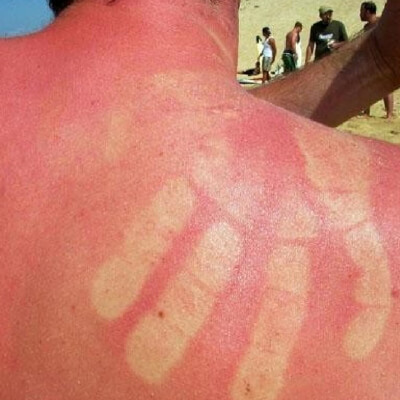Are you worried about a receding hairline and are considering a hair transplant? If this is you, but have no clue what it involves then this article is for you.
Hair transplantation replaces your lost hair or hairline by moving hair follicles from the body called the ‘donor site’ to the balding part known as ‘recipient site’. It only involves the use of local anesthesia during the procedure and doesn’t cause much discomfort. You can even watch TV or take a nap during the surgery! Read more on hair transplant what you need to know…
The facts about hair transplants
• 9 out of 10 balding men cite hair loss as their number 1 grooming concern
• 10% of patients that have had a hair transplant don’t admit it to anyone
• Two-thirds of all men will experience some hair loss by the time they hit 35, and by the age of 50 a full 85% of guys will have some form of thinning hair
• Research shows that 8 million men in the UK currently suffer from hair loss
• 40% of men under the age of 35 are already losing their hair
Why do you suffer from hair loss?
Before we go into detail about the hair transplant procedure, lets take a look at what exactly is causing your hair loss and balding.
The main reason for hair loss is due to it being hereditary and being passed on by either parent, although it’s true that the strongest influence is on the maternal side. The gene or genes responsible for this have not yet been identified and the pattern of inheritance is very complex.
Several health conditions, including thyroid disease and iron deficiency anemia, can cause hair loss. While thyroid blood tests and other lab tests, including complete blood count (CBC), on people who have ordinary hair loss are usually normal, it is important to exclude underlying causes in sudden or severe hair loss.
SEE ALSO: Myths about men’s hair
What is a hair transplant?
A hair transplants involves removing grafts/follicles from the back of the head (which are more resistant to hormonal changes) and using it to fill an area with thin or no hair.
Depending on the extent of the procedure, the transplant will approximately take 4-8 hours. Additional sessions may be needed if you continue to lose hair or decide that you want thicker hair.
When contemplating a hair transplant, it is important to note the two different methods used to remove the grafts: Follicular Unit Transplantation (FUT) and Follicular Unit Extraction (FUE).
FUT hair transplant method
The FUT method involves a strip of the scalp being cut out from the back of the head and it is then dissected into individual grafts.
Advantages
• Larger areas of baldness can be covered in fewer sittings
• The resection rate (the grafts that get cut whilst removing) may be lesser which means that it will provide superior results. However the resection rate depends on the skill of the surgeon
Who should opt for the FUT method?
• People who have larger areas of baldness and would like it covered in a single setting
• If you don’t mind cuts, stitches and a long recovery period
FUE Hair Transplant Method
FUE is a method of extracting, or ‘harvesting’, donor hair in a follicular unit hair transplant procedure. In FUE, an instrument is used to make a small, circular incision in the skin around a follicular unit, separating it from the surrounding tissue. The unit is then extracted (pulled) directly from the scalp, leaving a small hole.
This process is repeated until the hair transplant surgeon has harvested enough follicular units for the planned hair restoration. This process can take one or more hours and in large sessions, may be accomplished over two consecutive days. The donor wounds, appox 1mm in size, will complexly heal over the course of 7-10 days, leaving tiny white scars buried in the hair in the back and sides of the scalp.
Advantages
• No cuts or stitches as it doesn’t involve taking an entire strip of the scalp
• The recovery time is quick and you should be able to return to work the next day
Who should opt for the FUE method?
• Suitable for people who have smaller areas of baldness
• Men who want to wear shorter hairstyles
• Men who prefer less invasive procedures and don’t want cuts and stiches on the scalp
• Those looking for fast recover
Hair transplant planning before surgery
There are many things that need to be considered during a hair transplant. The surgeon has to consider things such as colour, quality and density of the donor hair. Planning the hairline is the most important step in the procedure. The surgeon will analyse your face and the set the hairline. These small things can have an affect on the final result.
RECOMMENDED: Stimulator Lotion 50ml from Fushi
Hair transplant after surgery
The patient will be discharged the same day. Many surgeons prefer not to bandage the area but the ones who do have a bandage applied, should be extremely careful to avoid shearing. The removal of the bandage also has to be very meticulous as it can damage the hair grafts.
After the surgery the patient will have many tiny incisions and short hair stubbles showing from the new placed grafts. But this will heal quickly and the soreness will clear up within a week.
Who should avoid having a hair transplant?
• If you are under 25 (even though you have on-going hair fall)
• Suffer from multiple medical conditions or heart problems, uncontrolled diabetes or hypertension
• Undiagnosed hair fall – if this isn’t androgenetic alopecia, the reason for hair fall needs to be identified before you consider a hair transplant
• Low density on the back of your head. Unfortunately you will not be able to have this procedure as you aren’t able to produce enough follicles for the transplantation



